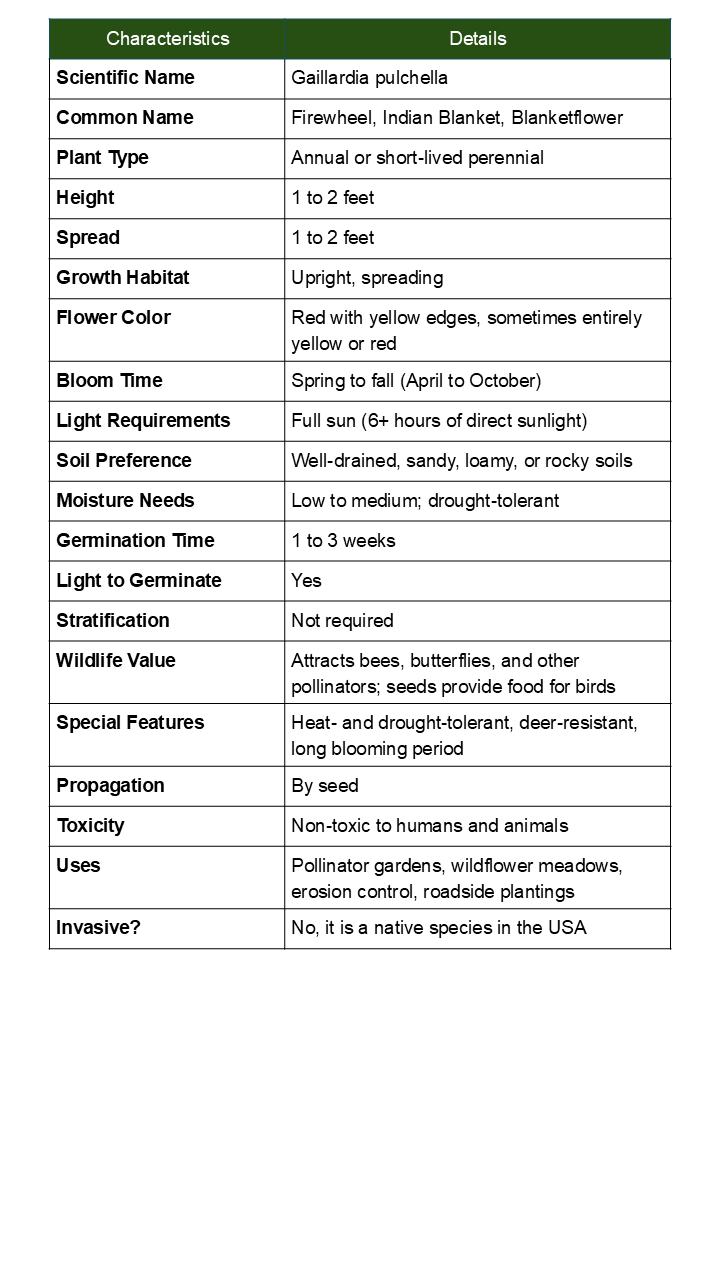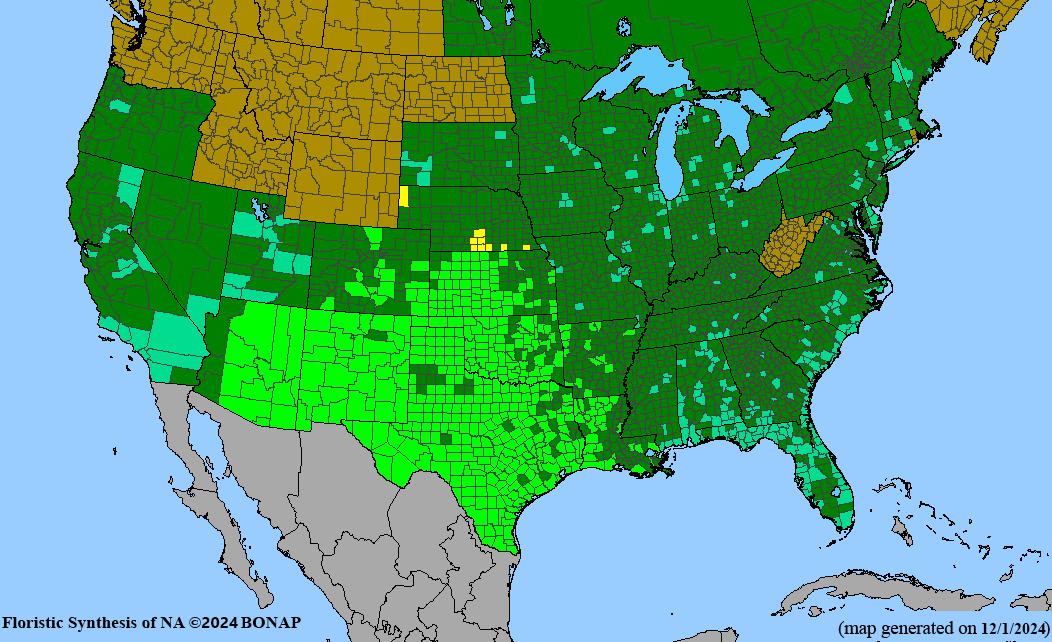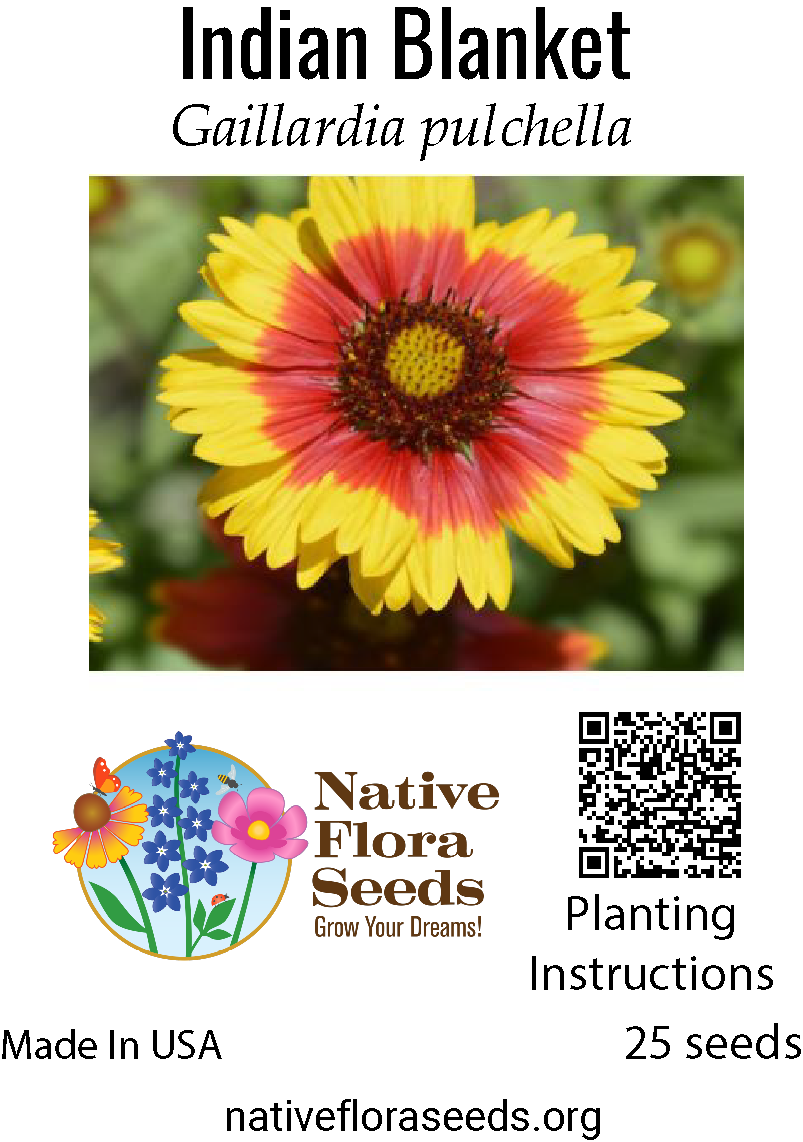Indian Blanket Seeds - Premium Gaillardia pulchella for Vibrant Wildflower Gardens
Regular price$4.00
/
Tax included.
2 reviews
Spectacular Native Beauty - Indian Blanket
Indian Blanket (Gaillardia pulchella), also known as Firewheel, is one of America's most beloved native wildflowers. This stunning annual produces brilliant red and yellow daisy-like blooms that create breathtaking displays from late spring through fall, making it perfect for adding vibrant color to any landscape.
🌻 Key Benefits:
- Long Blooming Season: Continuous flowers from late spring through first frost
- Heat & Drought Champion: Thrives in hot, dry conditions with minimal care
- Pollinator Magnet: Attracts butterflies, bees, and beneficial insects
- Self-Seeding: Annual that readily reseeds for years of colorful displays
- Cut Flower Excellence: Long-lasting blooms perfect for arrangements
- Deer Resistant: Natural compounds deter browsing animals
🌱 Plant Characteristics:
- Height: 1-2 feet tall, 1-2 feet wide
- Bloom Time: Late spring through fall
- Flowers: Red centers with bright yellow-tipped petals, 2-3 inches across
- Foliage: Hairy, lance-shaped leaves up to 3 inches long
- Light: Full sun (essential for best blooming)
- Soil: Well-draining, sandy soils preferred
- Zones: 3-10 (annual in most zones)
🎯 Perfect For:
- Wildflower meadows and prairie gardens
- Xeriscaping and drought-tolerant landscapes
- Pollinator habitat creation
- Cut flower and cottage gardens
- Roadside and naturalized plantings
- Children's gardens (easy to grow and colorful)
Growing Tips: Direct sow in fall or early spring. Seeds germinate easily in warm soil. Deadhead spent blooms to encourage continuous flowering, or leave some to self-seed.
Each packet contains fresh, viable seeds with detailed growing instructions. Sustainably sourced from native populations across the American Southwest.
FREE SHIPPING WITHIN USA



